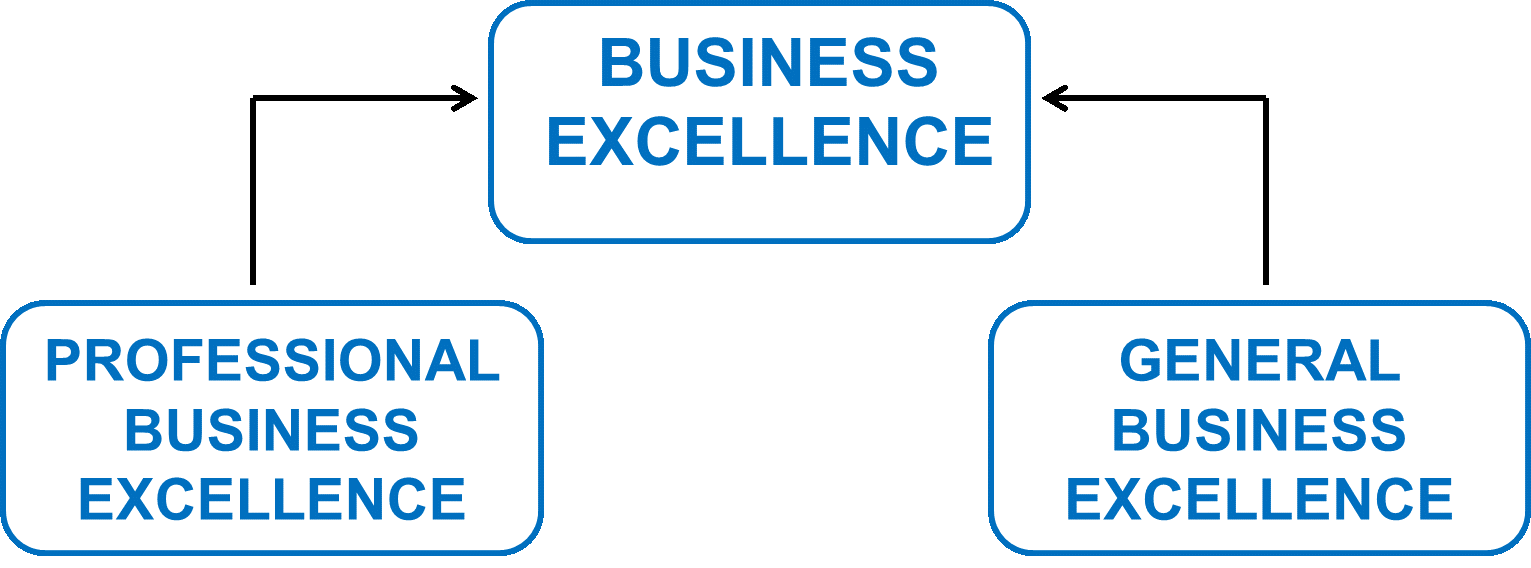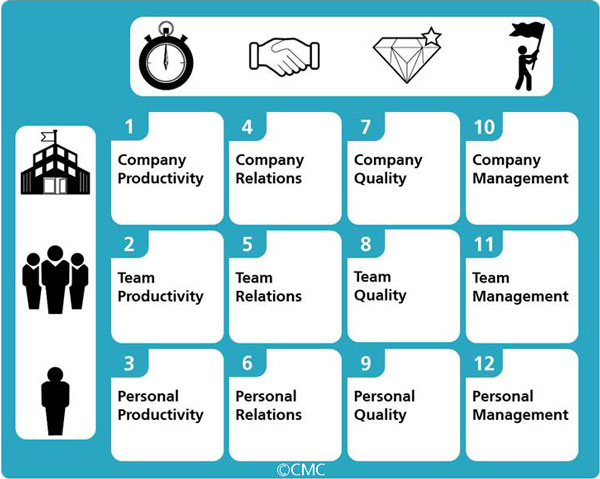General Business Excellence (GBE)

Professional Business Excellence
PBE implies that you know the business you are in and you realise what it takes to excel in that particular business.
PBE means, e.g., that you:
- Know what it takes to succeed in your business in your markets. Top management of your company has a well-developed business sense for your particular business
- Currently monitor, describe and understand the needs, wants and buying behaviour of your consumers and customers in all your markets.
- Know how to position and differentiate the brands of your company and its products and services
- Have the best approach to sell your products/services through e-commerce
- Are prepared for and knows what it takes to expand your business to other markets
- Have effective processes and systems in place to source the products
- Have effective and efficient supply chain systems and procedures in place
- Effectively manage the relationships with your suppliers and manufacturers and the importance of SRM is embedded in your organisation.
- Currently identify and meet demands from the environment concerning sustainability
- Know how to best find new relevant stakeholders
- Effectively manage the special antitrust issues
- know how to balance costs and efforts to boost sales and enhance service quality and customer loyalty
- are able to evaluate the effectiveness of marketing campaigns
- have documented your company’s main Professional Business Processes like production, procurement, warehousing, sales, HR, etc.
PBE also implies that the employees excel in their specialist roles as: sales people, store managers, sales managers, service coaches, graphical designers, translators, IT specialists, product managers, category managers, marketing managers, brand managers, quality auditors, HR specialists, service people, supply chain people, finance/admin specialists, sustainability specialists, legal specialists, etc.
General Business Excellence
GBE implies that you know what it generally takes to be successful in any business.
E.g., what it takes to:
- be productive and add value,
- solve problems and make good decisions,
- communicate well,
- enhance quality,
- inspire people and mobilise their positive energy,
- establish and maintain good relationships,
- apply appropriate management principles.
It implies, e.g., that:
- Your company has an overall strategic planning process in place: where does the group want to go and how to get there?
- Effective tools are used as input to the strategic planning process:
- SWOT (Strengths, Weaknesses, Opportunities, Threats)
- PEST (a tool to measure a business’s market and potential according to external factors: Political, Economic, Social and Technological)
- Business Development Model (Ansoff) – the 4 boxes: Market Penetration, Product Development, Market Development, Diversification
- Porter’s Five Forces Model. The following forces drive competition: (1. Existing competitive rivalry between suppliers. 2. Threat of new market entrants. 3. Bargaining power of buyers. 4. Power of suppliers. 5. Threat of substitute products (including technology change)
- Clear roles and responsibilities are defined at all levels in the organisation:
- Organisational descriptions are in place for all work units with Background/history, Pitch, Mission, Key Areas and related major tasks and processes, Success Criteria, Stakeholders, Interfaces, Grey Areas, Challenges, Important Decisions, Organisation Chart, Checklists
- ABC tasks are in place (A: Can do without asking and reporting. B: Can do without asking – report afterwards. C: Ask before doing)
- RACI tool is used when appropriate for critical decisions and projects. Responsible (the driver). Accountable (the overall responsible for “go/no go”). To be Consulted. (To be Informed)
- Modern management principles have been introduced in the entire organisation based on Claus Møller’s model for General Business Excellence “The 12 Windows model” described below.
- Your company will continue to practice and further develop the principles, concepts and tools involved in the 12 windows described below.
- Your company will continue to develop and maintain an “Employeeship Culture” where everyone brings their hearts to work.
- Your company will implement and continually manage the four General Business processes (The Management Process, The Productivity Process, The Relationship Process, The Quality Process).
The 12 Windows: A model for General Business Excellence
All management concepts are based on one or more of three basic elements that all companies and organisations need to have in place to create lasting results: Productivity, Relationships and Quality.

Productivity is about adding value in all activities performed at all levels in the organisation. Productivity is first and foremost about managing the resources: Time, Knowledge and Money.
Relationships is about building and maintaining good relations with all stakeholders (the ones who can “make you or break you”)
Quality is about building and maintaining the loyalty of external and internal customers.
Productivity, Relationships and Quality are not fads but evergreen basics of management essential for the survival and growth of any business.
The three basics of management are interdependent. You can’t have one without the others.

The results a company produces depend to a large degree on how well it manages Productivity, Relations and Quality.
How well a company manages productivity, relations and quality depends on how well its people exercise Leadership.
Claus Møller’s model for General Business Excellence comprises four interrelated models:
- Leadership Excellence (LE model)
- Productivity Business Excellence (PBE model)
- Relationship (or Emotional) Business Excellence (EBE model)
- Quality Business Excellence (QBE model)
Each model includes:
- Unique concepts
- Work methods and processes
- Books, checklists and exercises
- Tests and diagnostic tools
- Education and training modules
- Practical implementation tools
All models include evergreen, universal concepts and tools that will work:
- In any culture
- In any line of business
- In governmental and private sector
- In any size of organisation
- At any stage of a company’s life
Activities leading to excellent results take place at three levels:
- Company level
- Team level
- Personal level
The results produced at each level of the organisation are interdependent
- Total company results are based on the results of each team.
- Team results are based on the results of each team member.
- Personal results are influenced by the overall company results.
In Claus Møller’s model for General Business Excellence below, the “12 windows “ represent what any company, in any business, in any sector, in any culture and at any time must focus on to excel:
- Add value and ensure productivity by managing time, knowledge and money at company, team and personal level
- Build and maintain good relationships with all stakeholders at company, team and personal level
- Create and maintain quality and meet or exceed the demands and expectations from internal and external customers at company, team and personal level
- Perform managerial behaviour at company, team and personal level

To excel, all businesses need to establish and maintain 4 vital processes:
- The Productivity Process also called the “Vision Deployment”. It is in place when you can “tick window 1, 2 and 3”
- The Relationship Process also called “Shaping the Culture”. It is in place when you can “tick window 4, 5 and 6”
- The Quality Process also called the “Customer Loyalty”. It is in place when you can “tick window 7, 8 and 9”
- The Management Process also called the “Leadership Excellence”. It is in place when you can “tick window 10, 11 and 12”
